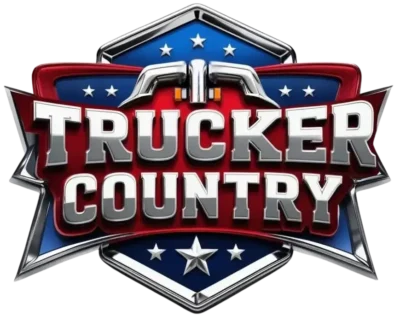Pre-Trip Inspection Test #2 is based on State CDL Manual Section 11.1.2 Cab Check/Engine Start
See below for more information or go to our CDL Pre-Trip Inspection Learning Center.
Note: Pre-Trip tests do not have CDL manual reference after each question like our other testing areas. Instead, the whole CDL section that applies to the test can be found at the bottom of each test page for your reference.
Take this same test in our other testing modes …
Official State CDL Manual Section 11.1.2
Cab Check/Engine Start
Oil Pressure Gauge
- Make sure oil pressure gauge is working.
- Check that pressure gauge shows increasing or normal oil pressure or that the warning light goes off.
- If equipped, oil temperature gauge should begin a gradual rise to the normal operating range.
Temperature Gauge
- Make sure the temperature gauge is working.
- Temperature should begin to climb to the normal operating range or temperature light should be off.
Air Gauge
- Make sure the air gauge is working properly.
- Build air pressure to governor cut-out, roughly 120-140 psi.
Ammeter/Voltmeter
- Check that gauges show alternator and/or generator is charging or that warning light is off.
Mirrors and Windshield
- Mirrors should be clean and adjusted properly from the inside.
- Windshield should be clean with no illegal stickers, no obstructions, or damage to the glass.
Emergency Equipment
- Check for spare electrical fuses.
- Check for three red reflective triangles, 6 fusees or 3 liquid burning flares.
- Check for a properly charged and rated fire extinguisher.
Note: If the vehicle is not equipped with electrical fuses, you must mention this to the examiner.
Steering Play
- Non-power steering: Check for excessive play by turning steering wheel back and forth. Play should not exceed 10 degrees (or about two inches on a 20-inch wheel).
- Power steering: With the engine running, check for excessive play by turning the steering wheel back and forth. Play should not exceed 10 degrees (or about two inches on a 20-inch wheel) before front left wheel barely moves.
Wipers/Washers
- Check that wiper arms and blades are secure, not damaged, and operate smoothly.
- If equipped, windshield washers must operate correctly.
Lights/Reflectors/Reflector Tape Condition
(Sides & Rear)
Test that dash indicators work when corresponding lights are turned on:
- Left turn signal.
- Right turn signal.
- Four-way emergency flashers.
- High beam headlight.
- Anti-lock Braking System (ABS) indicator.
Check that all external lights and reflective equipment are clean and functional. Light and reflector checks include:
- Clearance lights (red on rear, amber elsewhere).
- Headlights (high and low beams).
- Taillights.
- Backing lights.
- Turn signals.
- Four-way flashers.
- Brake lights.
- Red reflectors (on rear) and amber reflectors (elsewhere).
- Reflector tape condition
Note: Checks of brake, turn signal and four-way flasher functions must be done separately.
Horn
- Check that air horn and/or electric horn work.
Heater/Defroster
- Test that the heater and defroster work.
Parking Brake Check
- With the parking brake engaged (trailer brakes released on combination vehicles), check that the parking brake will hold vehicle by gently trying to pull forward with parking brake on.
- With the parking brake released and the trailer parking brake engaged (combination vehicles only), check that the trailer parking brake will hold vehicle by gently trying to pull forward with the trailer parking brake on.
Hydraulic Brake Check
- Pump the brake pedal three times, then hold it down for five seconds. The brake pedal should not move (depress) during the five seconds.
- If equipped with a hydraulic brake reserve (backup) system, with the key off, depress the brake pedal and listen for the sound of the reserve system electric motor.
- Check that the warning buzzer or light is off.
Air Brake Check (Air Brake Equipped Vehicles Only)
-
Failure to perform all three components of the air brake check correctly will result in an automatic failure of the vehicle inspection test. Air brake safety devices vary. However, this procedure is designed to see that any safety device operates correctly as air pressure drops from normal to a low air condition. For safety purposes, in areas where an incline is present, you will use wheel chocks during the air brake check. The proper procedures for inspecting the air brake system are as follows:
- Shut off the engine, chock your wheels, if necessary, release the tractor protection valve and parking brake (push in), fully apply the foot brake and hold it for one minute. Check the air gauge to see if the air pressure drops more than three pounds in one minute (single vehicle) or four pounds in one minute (combination vehicle).
- Turn electrical power on and begin fanning off the air pressure by rapidly applying and releasing the foot brake. Low air warning devices (buzzer, light, flag) should activate before air pressure drops below 60 psi.
- Continue to fan off the air pressure. At approximately 40 psi on a tractor-trailer combination vehicle, the tractor protection valve and parking brake valve should close (pop out). On other combination vehicle types and single vehicle types, the parking brake valve should close (pop out).
Service Brake Check
- You will be required to check the application of air or hydraulic service brakes. This procedure is designed to determine that the brakes are working correctly and that the vehicle does not pull to one side or the other.
- Pull forward at 5 mph, apply the service brake and stop. Check to see that the vehicle does not pull to either side and that it stops when brake is applied.
Safety Belt
- Check that the safety belt is securely mounted, adjusts, latches properly and is not ripped or frayed.
